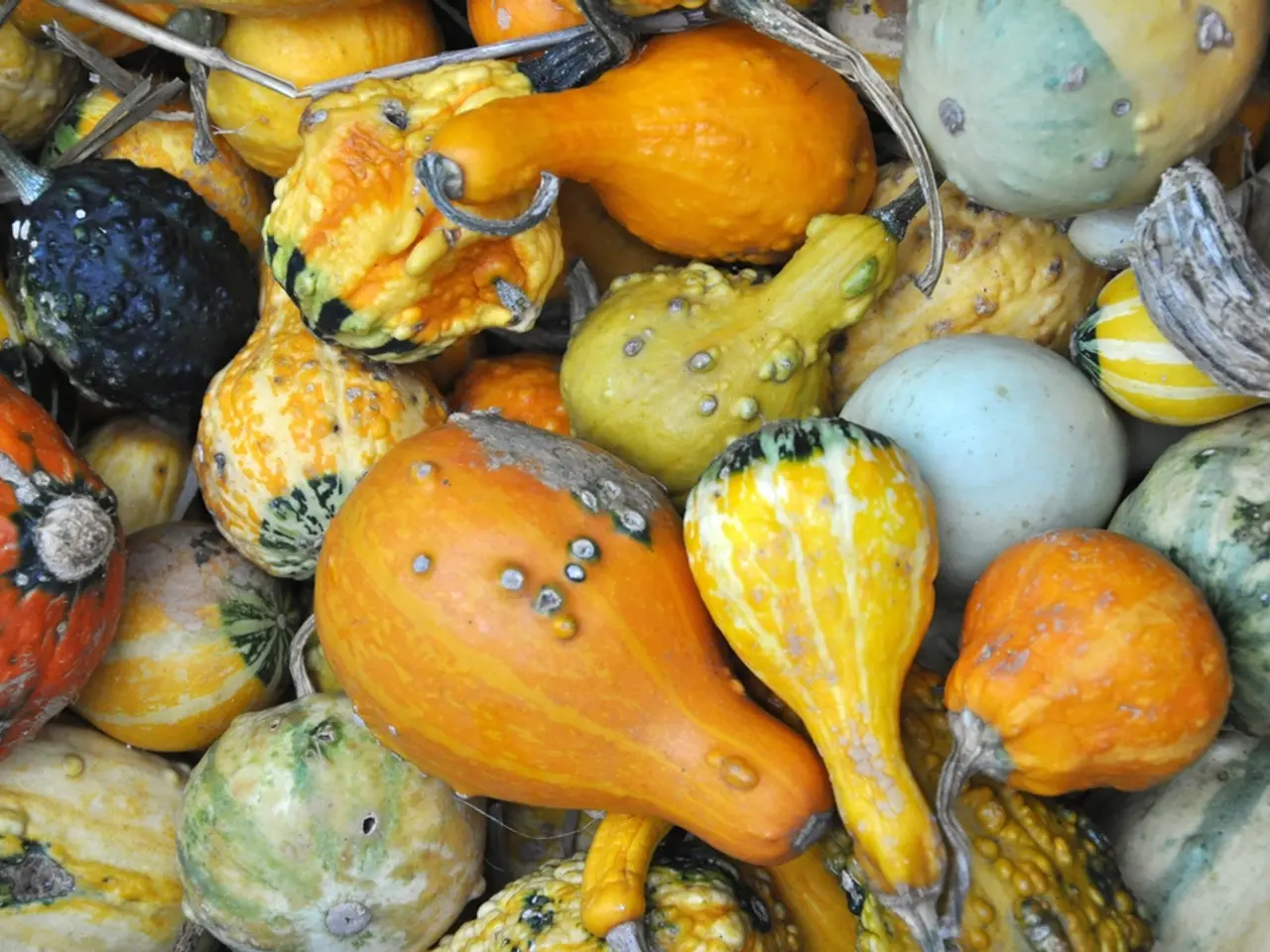Low-Carb Fruits on the Keto Diet: Discover 10 Fruity Options and Their Advantages
In the world of ketogenic diets, finding the right balance between maintaining a low-carb intake and enjoying some fresh fruit can be a challenge. Here's a list of some keto-friendly fruits and their approximate net carb counts per typical serving, helping you make informed decisions for your diet.
Avocado stands out as the most keto-friendly fruit due to its very low net carbs (1.8g per half) and high healthy fats. This makes it an ideal choice for those seeking to meet their keto macros [1].
Berries such as blackberries, raspberries, and strawberries are generally keto-compatible when eaten in controlled portions. For instance, blackberries provide around 6.4g of net carbs in a 150g serving, while raspberries contain 6.7g of net carbs in a 123g serving and strawberries have 5.8g of net carbs in a 2/3 cup serving [1][2].
Blueberries, however, have a higher net carb count and should be limited to small amounts. A 1/2-cup serving of blueberries contains 9.1g of net carbs [2].
Unsweetened coconut is also keto-friendly due to its moderate net carb content and beneficial fats [3]. Citrus fruits like lemons and limes have very low net carbs and are often used to add flavour rather than eaten in large amounts [1].
It's important to note that fruits like cherries, peaches, apples, oranges, and bananas are high in carbs and not suitable for a keto diet. Fruits like a whole plum (7.5g of net carbs), a whole tomato (approximately 3.3g of net carbs), and a kiwifruit (around 8.25g of net carbs) should also be restricted or eliminated [1][3].
While there is no carb intake guideline for all people following the keto diet, the Harvard School of Public Health states most people should try to keep their total carbs under 50g per day [4]. A typical keto diet strictly regulates calorie intake for each of the three macronutrients: fats, protein, and carbs, with 55-60% of calories coming from fat, 30-35% from protein, and 5-10% from carbohydrates [5].
Fiber is an important factor in the keto diet. A person's body cannot digest this substance, so to calculate the carbs eaten from food containing fiber, subtract the carbs from fiber from the total amount of carbs in the food [5].
This list can help guide fruit choices on a ketogenic diet to maintain a low carb intake while still enjoying some fresh fruit. Remember, the key is moderation and careful consideration of the type and amount of fruit consumed to stay within your allotted macros.
- For those with a bipolar condition, maintaining a healthy lifestyle, including a keto diet, may have potential benefits in managing their symptoms.
- In some studies, it has been observed that low-carb diets, like the keto diet, can lead to improvements in depression symptoms.
- Obesity is a common health issue that can be addressed with a combination of healthy diets, regular exercise, and other nutrition science.
- The AQ (Autism-Spectrum Quotient) test can help predict the likelihood of an individual having autism, a condition that may be associated with an unhealthy diet and lifestyle.
- Fiber-rich foods, such as nuts, seeds, and certain vegetables, can aid in digestion and help regulate blood sugar levels, which is beneficial for people following a keto diet.
- From a health-and-wellness perspective, it's crucial to incorporate various types of healthy diets, such as Mediterranean, keto, and plant-based, to maintain overall wellness.
- The predictive value of a keto diet lies in its ability to promote weight loss and improved health markers like blood sugar and cholesterol levels.
- Other nutrition factors to consider while following a keto diet include adequate intake of essential minerals and vitamins, which can be derived from a variety of food-and-drink sources.
- In addition to fruits, adhering to a keto diet may require making adjustments to other food choices, such as reducing carbohydrate intake from grains, legumes, and starchy vegetables, and increasing fats from sources like nuts, seeds, and oil.




